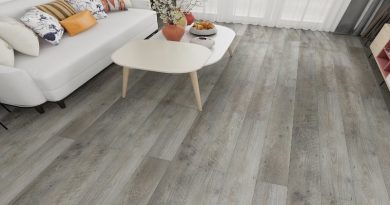6 Minimalist Home Interior Design Ideas
The minimalist trend has affected the interior design world massively. It has imbibed the feeling of freshness, mindfulness, and calm for residents or inhabitants, making the layout sustainable. There is nothing more exquisite than a newly renovated or freshly spruced space. However, maintaining and keeping it organised is a daunting task, especially when leading a busy lifestyle. Of course, not everyone has the luxury of hiring cleaners and maids to do this. The ideal way to tackle this is to embrace the minimalist lifestyle.
Minimalism revolves around the premise that less is more. The idea is curated rather than cluttered. In addition, the design is deeply rooted in utilising the basics and veering away from superfluous and ornamental décor, yielding a sophisticated and sleek outcome. If you are looking into transitioning your home into minimalism, this article will tackle six minimalist home improvement ideas that can be integrated into your new home or remodelling project. The home décor ideas will centre around design and architectural aesthetics, simple, neutral colour palettes, and clean lines.
Clear out clutter
Embracing the minimalist design would entail clearing all things junk and unnecessary. To achieve peace and order, eliminate clutter and organise things out of sight and in order of priority. For example, the bed or a chair typically is the catchall for all clothing, accessories, and knick-knacks. To get rid of these, invest in fitted bedrooms to store and organise all your belongings. Likewise, this fixture can also support minimalism by being cohesive in design with the entire room. Contact your local supplier to explore this functional and fantastic installation.
Be consistent with this process throughout other rooms and living spaces in your home. You will be surprised at how light and calming it feels.
Invest in classic and timeless pieces
Consider each furniture and ornamental piece carefully before curating them back into the layout. The end goal for the room is pared-back aesthetics but at the same time cosy and accommodating that the inhabitant would want to spend time in. Buy quality pieces that are built to last and withstand daily use. Invest in durable closets, tables, and sofas.
Utilise different textures in monochromatic tones
The greatest pitfall of minimalism is boring, bland, and cold. Playing with texture is an effective remedy to break the monotony. Explore pieces with beads, sequins, velvet, or sheepskin but within the confines of the same tonal family.
Prioritise functionality over aesthetics
Always integrate multipurpose in each furniture, décor, or fixture. Repurposing surface areas as a storage space can make each item functional. For example, a wooden storage case can also be utilised as added seating in a living room.
Veer away from ornamental and decorative pieces
Minimalism does not mean zero decors. It only entails ornamental pieces to be functional while serving their purpose as an accessory. For example, a sculptural lamp in the living room can serve as a décor likewise a lighting fixture.
Keep it simple
Balance the monochromatic tones and refined lines with natural elements like wood and woven baskets as storage and indoor plants and succulents as table centrepieces. In addition, take advantage of natural light by optimising sheer drapes and a strategically placed mirror to bounce light around the space.
The end-all and be-all of a minimalistic home is simplicity. Ultimately, it means subdued, pare-back aesthetics, clutter-free, and abiding by the “less is more” philosophy.




